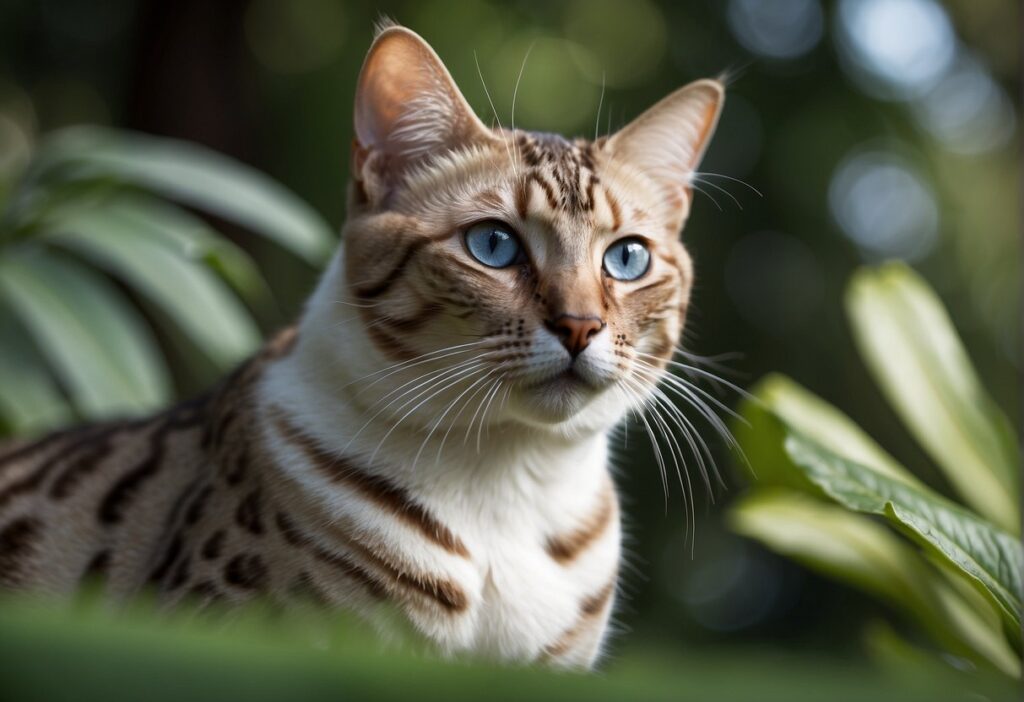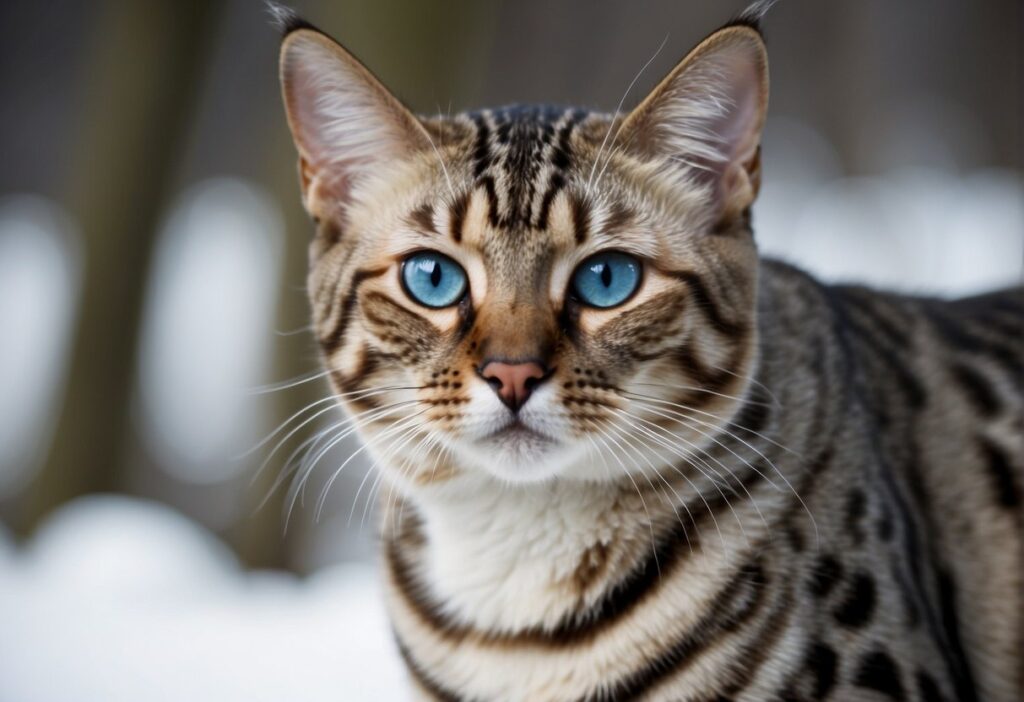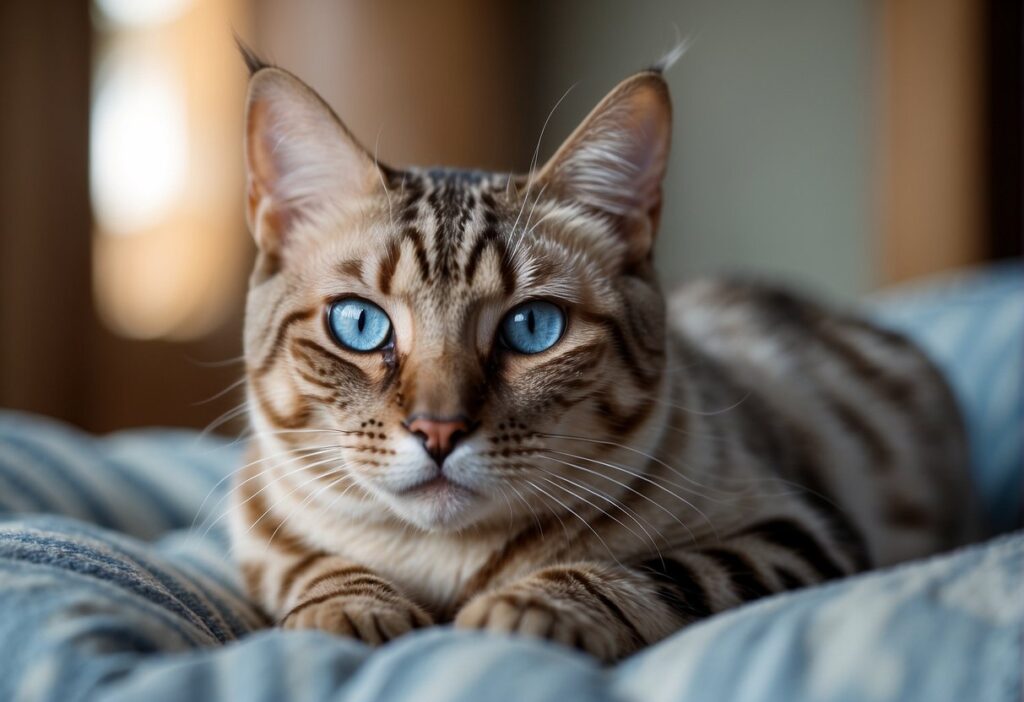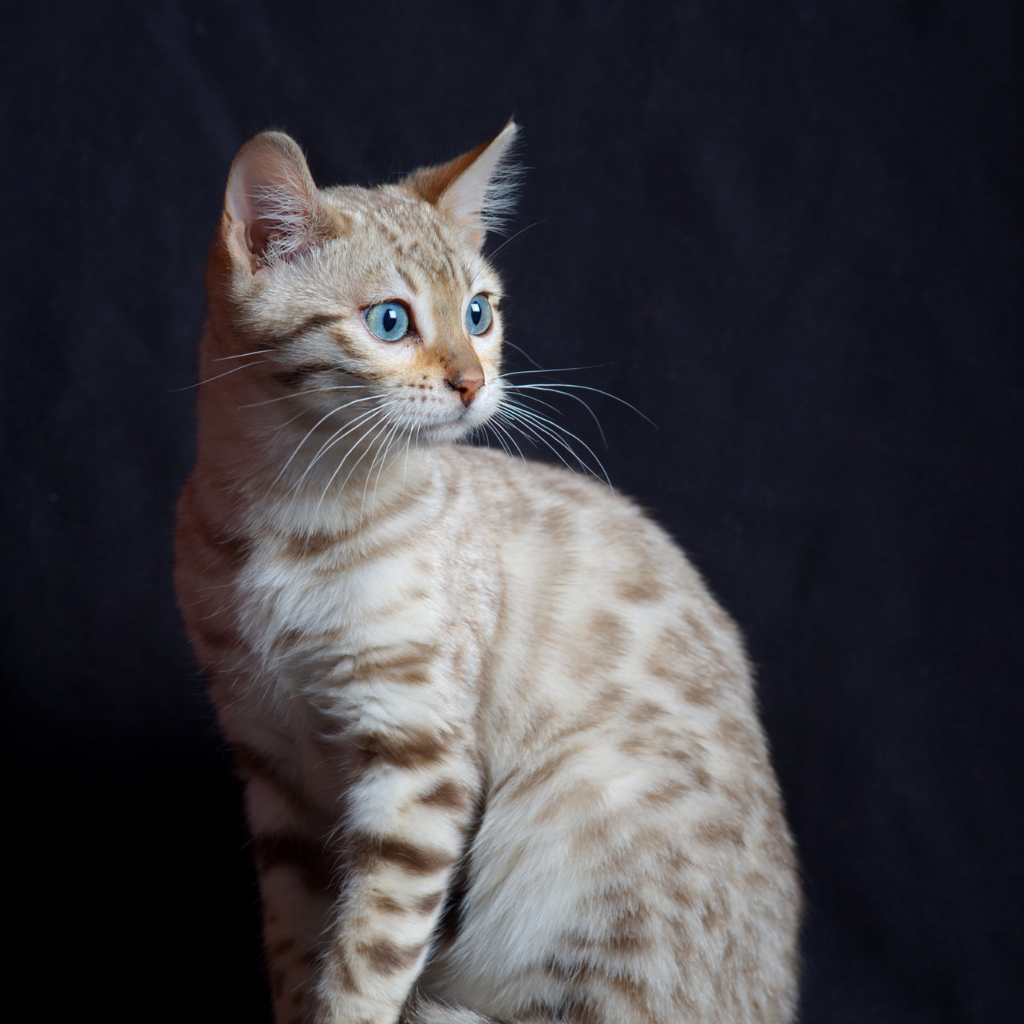
The rarest type of Bengal cat is the Snow Bengal, also known as the Seal Lynx Point Bengal.
Snow Bengals are so rare because they are the result of a specific genetic combination that produces their unique coloring.
These cats have a pure white coat with markings around their eyes, tail, and paws that are a pale gray or beige color. Their striking blue eyes make them even more mesmerizing.
Because they’re so rare, they are also the most expensive. However, their beauty and uniqueness make them highly sought after by Bengal cat enthusiasts.
It’s important to note that while Snow Bengals are the rarest type of Bengal cat, they are still recognized by the International Cat Association (TICA) as a separate breed. This means that they are not a mix between a Bengal and a Snowshoe or Siamese, as some people may believe.
Bengal Cat Varieties

Bengal cats are a unique breed that come in a variety of coat patterns and colors:
Recognized Coat Patterns
Bengal cats can have one of two recognized coat patterns: spotted or marbled.
Spotted Bengals have spots that can be either large or small, while marbled Bengals have a swirling pattern that resembles marble. Both patterns are beautiful and unique in their own way.
Typical Coat Colors
The Bengal cat breed has three typical coat colors: brown, silver, and snow.
Brown Bengals come in a variety of shades, ranging from light tan to dark brown. Silver Bengals have a white coat with black or grey spots, while snow Bengals have a white coat with spots that can be either brown, blue, or charcoal.
In addition to these recognized coat colors, there are also unrecognized colors such as blue, cream, and melanistic (solid black).
Charcoal Bengals are one of the rarest types of Bengal cats, making them highly sought after by cat enthusiasts. They get their name from their distinct coat color, which is a dark grey or black that resembles the color of charcoal.
Genetics of Coat Color and Pattern

Personally, I find the genetics of coat color and pattern to be fascinating. Understanding the inheritance of colors and patterns is crucial for breeding programs and producing rare and unique variations:
Inheritance of Colors and Patterns
The coat color and pattern of a Bengal cat are determined by specific genes that are inherited from their parents. The genes responsible for coat color and pattern are located on different chromosomes, and their expression can be influenced by various factors, such as temperature and age.
Bengal cats can have three recognized coat colors: brown, silver, and snow.
Brown Bengals are the most common and have a coat that is a combination of black and brown. Silver Bengals have a coat that is a combination of black and silver, while snow Bengals have a coat that is a combination of white and another color, such as brown or silver.
The inheritance of coat color and pattern in Bengal cats is complex, and breeders must carefully select cats with desirable traits to produce offspring with the desired coat color and pattern.
For example, the silver Bengal is considered one of the rarest due to its recessive gene, which requires both parents to carry it.
Rare and Unique Variations
Bengal cats can also have other coat colors and patterns that are not recognized by TICA, such as charcoal, blue, and melanistic (solid black). These variations are considered rare and can be produced through careful breeding programs.
The pedigree of a Bengal cat can also influence the rarity of its coat color and pattern.
For example, a Bengal cat with a pedigree that includes a long line of silver Bengals is more likely to produce silver offspring.
Identifying Rare Bengal Cats

The rarest types of Bengal cats are the Snow Bengal, Seal Lynx Point Bengal, Seal Mink Bengal, and Seal Sepia Bengal. These cats have a unique coat color and pattern that sets them apart from other Bengals.
The Snow Bengal, also known as the Seal Lynx Point Bengal, is the rarest of all Bengal cats. With their pure white coat and unique colored markings around their eyes, tail, and paws, these cats are truly one-of-a-kind. Their stunning blue eyes add to their beauty and make them even more mesmerizing.
The Seal Mink Bengal, on the other hand, has a coat color that is a combination of brown and silver. They have aqua-colored eyes and a spotted coat pattern. This type of Bengal cat is also rare and highly sought after by breeders and cat lovers alike.
The Seal Sepia Bengal is another rare type of Bengal cat that has a coat color that is a rich golden brown. They have green or gold eyes and a spotted coat pattern.
Factors Affecting Rarity
The rarity of these Bengal cats is due to their genetics. The Snow Bengal, Seal Lynx Point Bengal, and Seal Mink Bengal all have a recessive gene that is needed to produce their unique coat colors and patterns. This means that breeders must carefully select cats with the appropriate pedigree to produce these rare cats.
Additionally, these cats are recognized by The International Cat Association (TICA) as a separate breed, which has contributed to their popularity and rarity. Breeders must meet strict TICA standards to produce cats that meet the criteria for these rare breeds.
Are there any particularly rare patterns found in Bengal cats?
Yes, there are several rare patterns found in Bengal cats. The most uncommon pattern is the “marbled” pattern, which is a combination of stripes and swirls that create a unique and beautiful pattern on the cat’s coat.
Another rare pattern is the “spotted” pattern, which is characterized by small, distinct spots on the cat’s coat.
Is the Black Bengal cat among the rarest of its breed?
No, the Black Bengal cat is not among the rarest of its breed. While black is not a common color for Bengal cats, it is not considered a rare color either.
